When it comes to cooking and serving food, some cookware and dishes are better than others. In the ceramic vs porcelain debate, things get a bit tricky, as these two materials are different but also incredibly similar. If you’ve always wondered which one is the better choice for your kitchen or home, wonder no more. In this article, we’re going to explore all of the differences and similarities between ceramic and porcelain, including pros and cons, types of available products, and some of the most important questions people have about these two materials. By the time you reach the end, you’ll have a clear idea about your favorite between ceramic vs porcelain.
Ceramic vs porcelain
Before we jump into all the details, we should mention that all porcelain is ceramic but not all ceramic is porcelain. More specifically, porcelain is a type of ceramic, one of the three types that also includes earthenware and stoneware.
First, what is ceramic? Made from clay and water and mixed with other materials, ceramic is shaped into the desired forms, often with the use of molds, and then fired in a kiln. The heating process hardens the material and makes it strong and durable. Most products made from ceramic, especially dishes and cookware, feature a glazed finish. However, you can also find more rustic ceramic products with a rough surface.
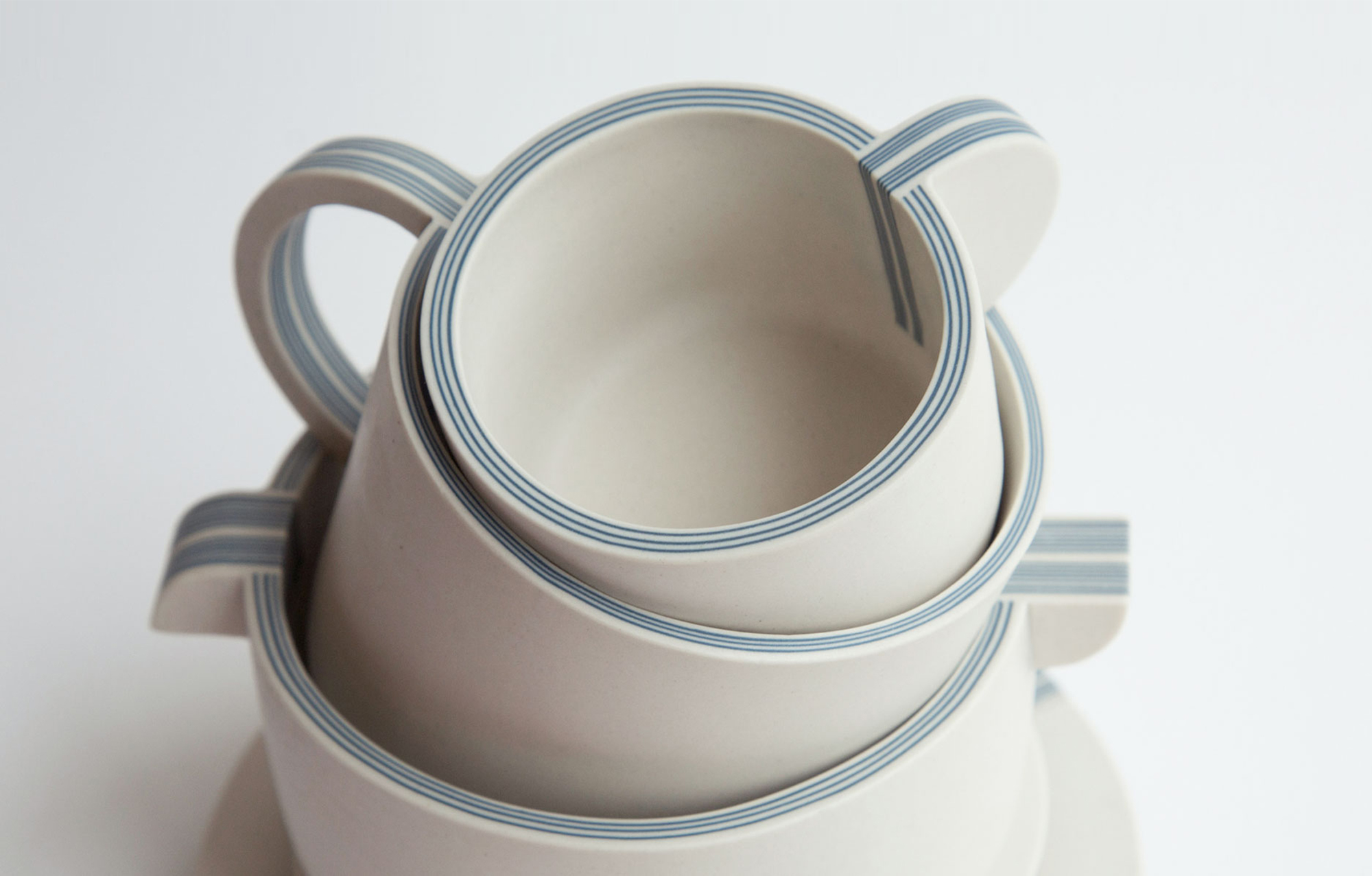
More refined and fired at higher temperatures (between 2,200 and 2,600 °F), porcelain is harder and more durable than ceramic. It’s made from the clay mineral kaolinite along with other materials like feldspar, bone ash, ball clay, glass, quartz, steatite, and alabaster. Porcelain, including the famed Japanese porcelain, is also finer and more elegant than ceramic, earthenware and stoneware, boasting a white surface and a beautiful translucence that allows light to pass through the material. These features make porcelain tableware ideal for special occasions.
Porcelain also comes in three different varieties: hard-paste porcelain, soft-paste porcelain, and bone china. Hard-paste porcelain contains kaolinite, feldspar and quartz and it’s fired at temperatures of up to 2,552 °F. Soft-paste porcelain features a blend of kaolin, quartz, feldspars, and nepheline syenite or different types of feldspathic rock, but since it’s fired at lower temperatures it’s not as durable or as hard as other types of porcelain. Finally, bone china is the toughest and most refined kind of porcelain. Made from a mix of bone ash, kaolin, and a feldspathic material, it’s vitrified and has a translucent surface. The laborious crafting method and the higher cost of the raw materials make bone china the most expensive type of porcelain.
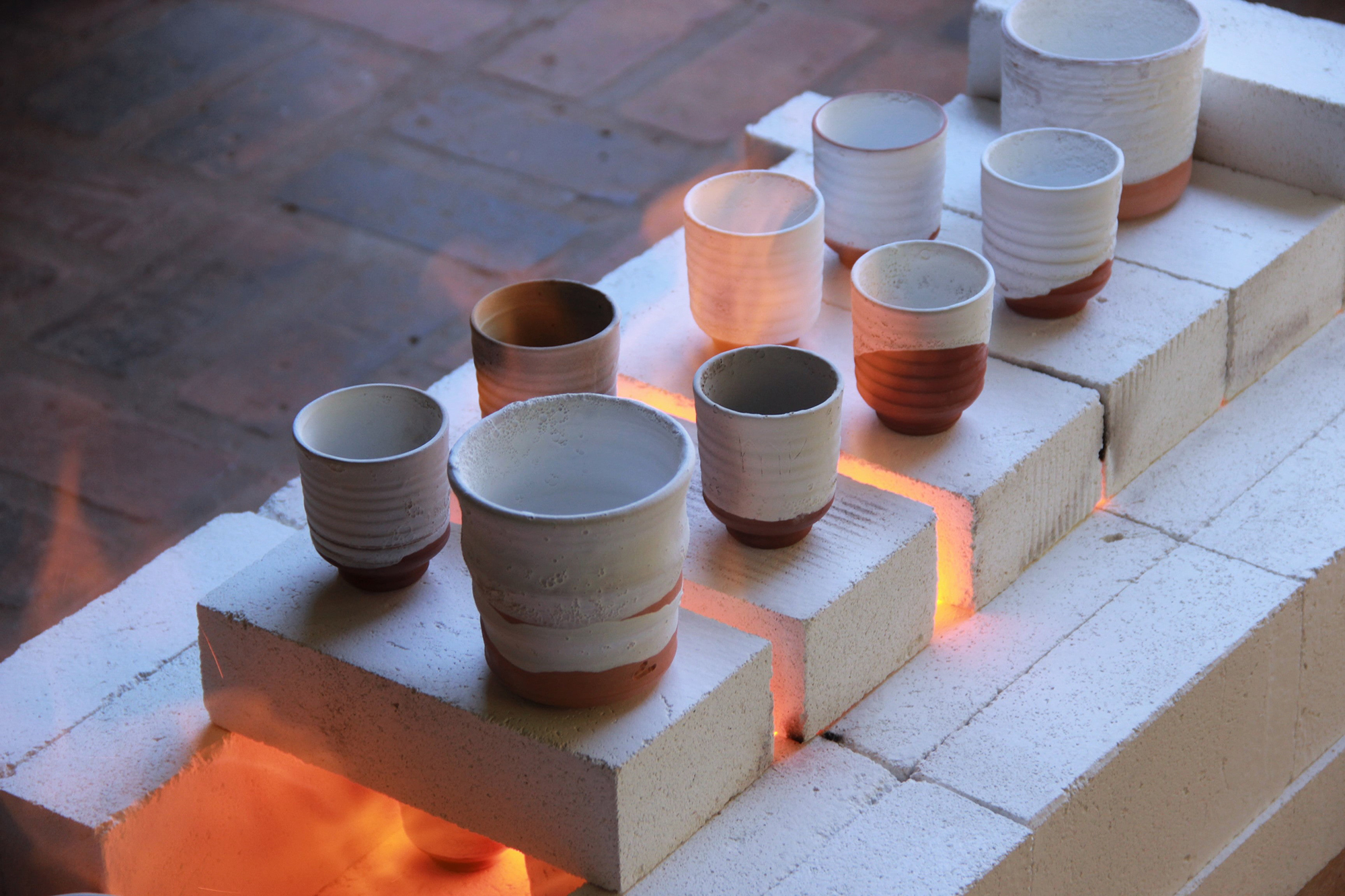
What about earthenware and stoneware? While classic earthenware, also called terracotta, has a more porous surface and is more fragile, it also has a more affordable price. It’s made with a blend of kaolin, ball clay, quartz and feldspar and it’s fired at temperatures between 1,740 and 2,100 °F. Depending on the temperature, the material can have a reddish hue (low temperature) or dark brown and even black (high temperature). This type of ceramic absorbs water if it’s unglazed but most earthenware dishes and plates feature glazing. Even with glazing, ceramic absorbs slightly more water than porcelain, which has a high density that makes it resistant to moisture.
Like porcelain, stoneware is fired at higher temperatures, between 2,010 to 2,370°F. Tougher than earthenware, stoneware is similar in strength to porcelain but more opaque. Whether vitreous or semi-vitreous, stoneware is non-porous and thus doesn’t absorb liquids. Nowadays, you can buy stoneware with glazing and with different colors, making this a great option for those who prefer more vibrant designs.
We’ve covered the main difference of ceramic vs porcelain, but what are the most common types of products made with these materials?
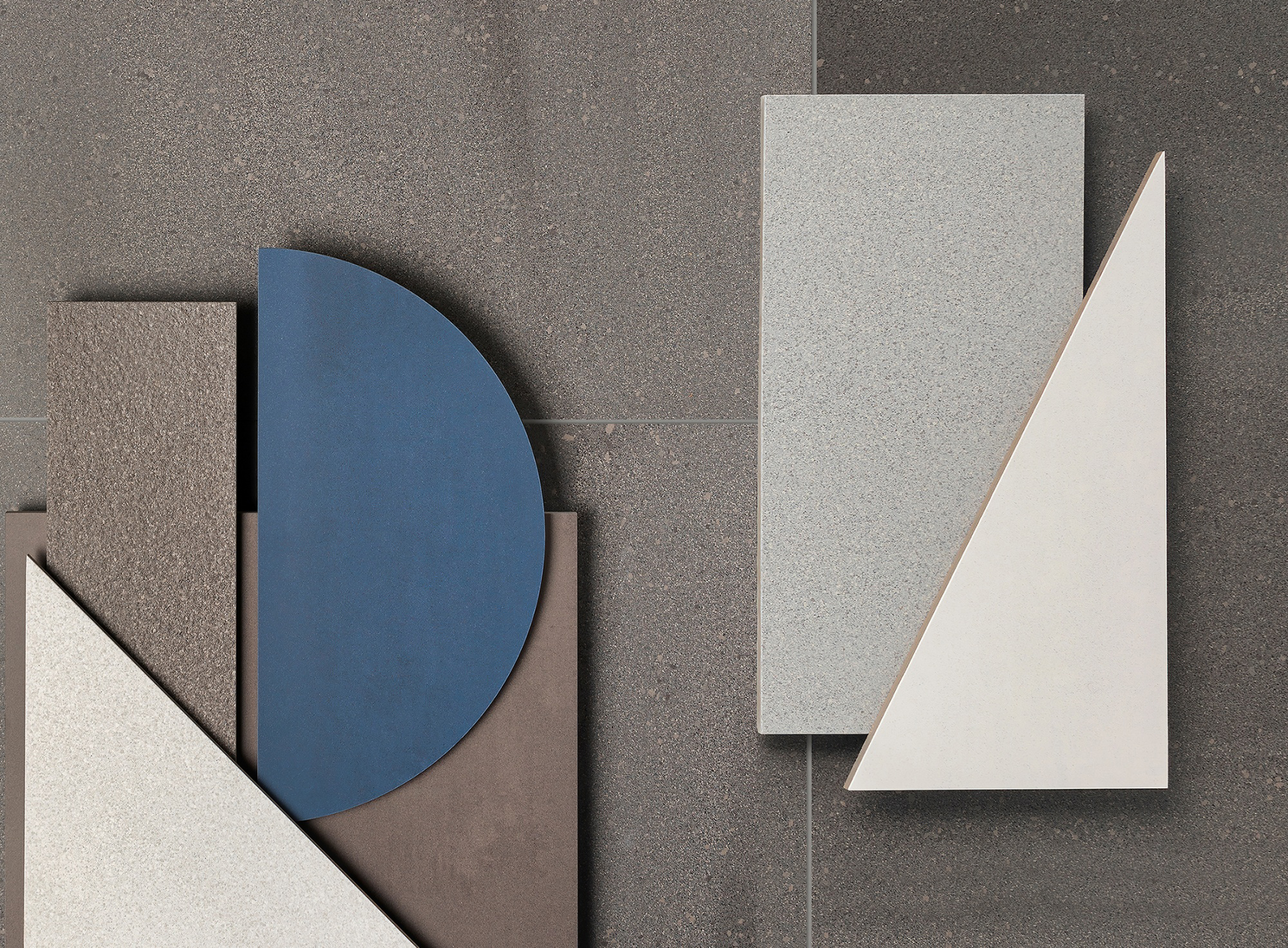
Tiles
Wall and floor tiles are one of the most widespread products in the modern era made from ceramic or porcelain. While in the past, these materials were usually used to craft vessels, dishes, decorative items, and tableware, now it’s often more common to find tiles manufactured from ceramic and porcelain. Their extensive use in bathrooms, hallways, and patios have made them incredibly popular. However, it’s important to know the difference between ceramic vs porcelain tiles before choosing one instead of the other.
Ceramic tiles are made with a less refined clay composition and they’re also fired in a kiln at a lower temperature. As a result, they have a lower density and they’re not as durable as porcelain. Apart from absorbing more moisture, ceramic tiles also require more frequent cleaning. Stains can also leave a permanent mark if left to absorb in the tile. With glazed tiles, chips and cracks reveal the material of the ceramic. However, it’s not all doom and gloom. Ceramic tiles are affordable, especially compared to porcelain or stone tiles. They’re also easier to cut and thus easier to install. The cool surface of the ceramic tiles makes them ideal for flooring in areas with a warmer climate.
Making porcelain tiles requires a more refined clay composition as well as high kiln temperatures. Consequently, these tiles are incredibly dense, hard-wearing, easy to clean and to maintain, durable, and resistant to moisture. They come as unglazed or glazed, but either way their color runs all the way through the body of the tile. Porcelain tiles also have a perfectly smooth surface without the bumps and rough surfaces of porous ceramic and earthenware, making them easier to clean. Since they’re harder and more resistant to chipping, porcelain tiles are ideal for flooring, even in areas with heavy foot traffic. These tiles are also a perfect choice for bathrooms. Their density makes them harder to cut and to install. Finally, porcelain tiles are more expensive than ceramic.
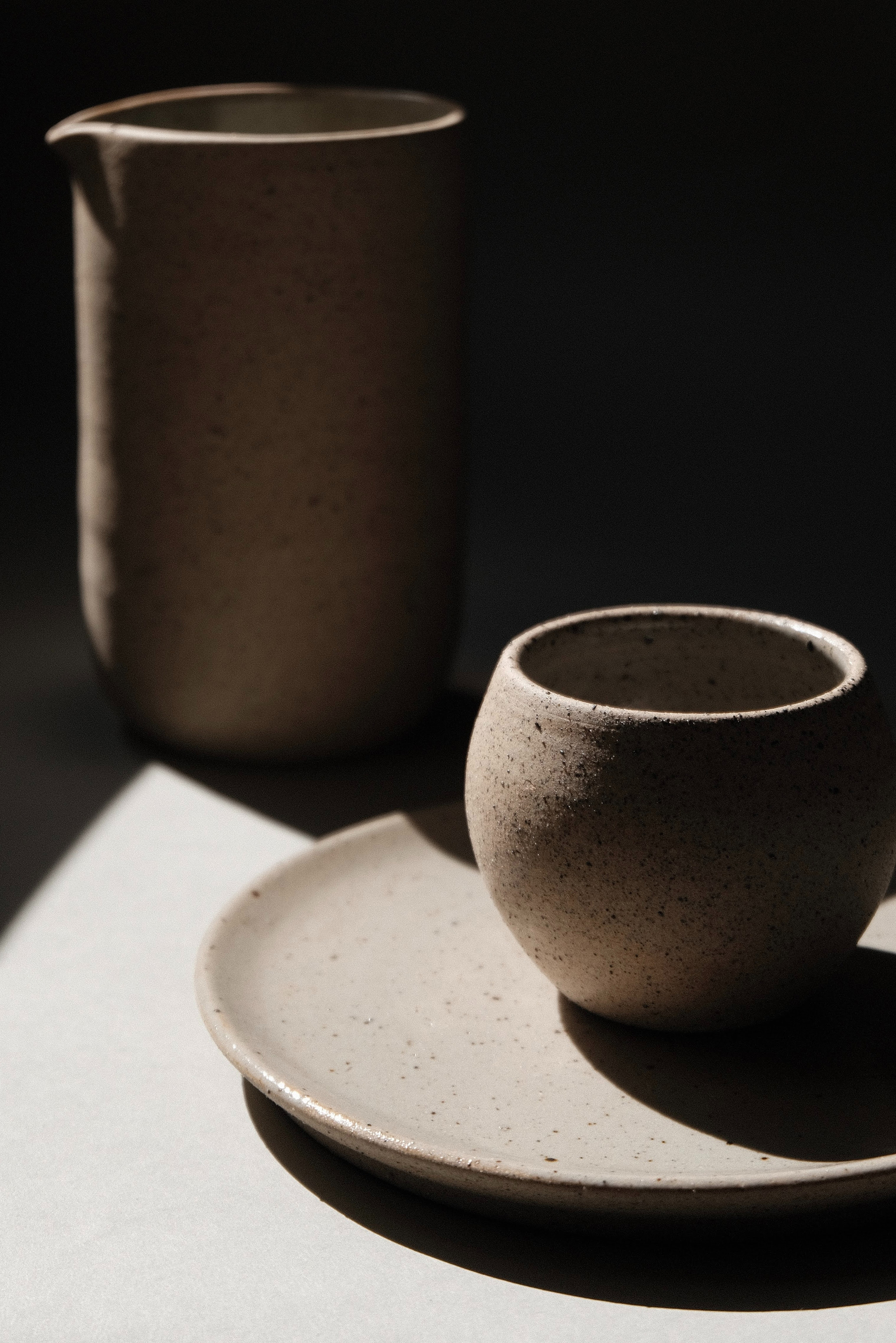
Plates and Tableware
In the plates and ceramic vs porcelain tableware category, design finally shines. Think beautifully decorated plates and teapots or serving bowls, platters, and cups. However, which material to choose depends on your own preferences and budget.
Stoneware and earthenware are more affordable than porcelain tableware. Earthenware, in particular, has a lower price, but that comes at a cost. For example, earthenware products are easier to chip and break and they’re also heavier. Stoneware has a vitrified surface and it’s more durable and more versatile. Ceramic plates and tableware have a glazed finish and suit everyday use. They’re also safe to use with food products, unlike unglazed ceramic.
Porcelain plates and tableware are finer and delicate in appearance, although they are more durable and harder than ceramic. Lighter and thinner, porcelain dinnerware is perfect for special occasions and formal dining. Although most porcelain products are microwave-safe, some may feature metal detailing that makes them unsuitable to use in a microwave. Porcelain plates are also more expensive than stoneware and earthenware.
In terms of aesthetics, you can find a wide range of revolutionary designs made from glazed ceramic or porcelain. Some products may feature hand-painted decorations or 24K gold detailing. While high-quality ceramic plates are a great alternative to the more expensive porcelain, porcelain tableware – and especially bone china – has a refined, translucent finish that stoneware can’t match. Bright colors or monochrome palettes, designs inspired by the world’s cultures, tableware that celebrates the beauty of Portugal’s landscapes, or gorgeous cups that bring together the decorative styles of the East and West are some of the designs you can find.
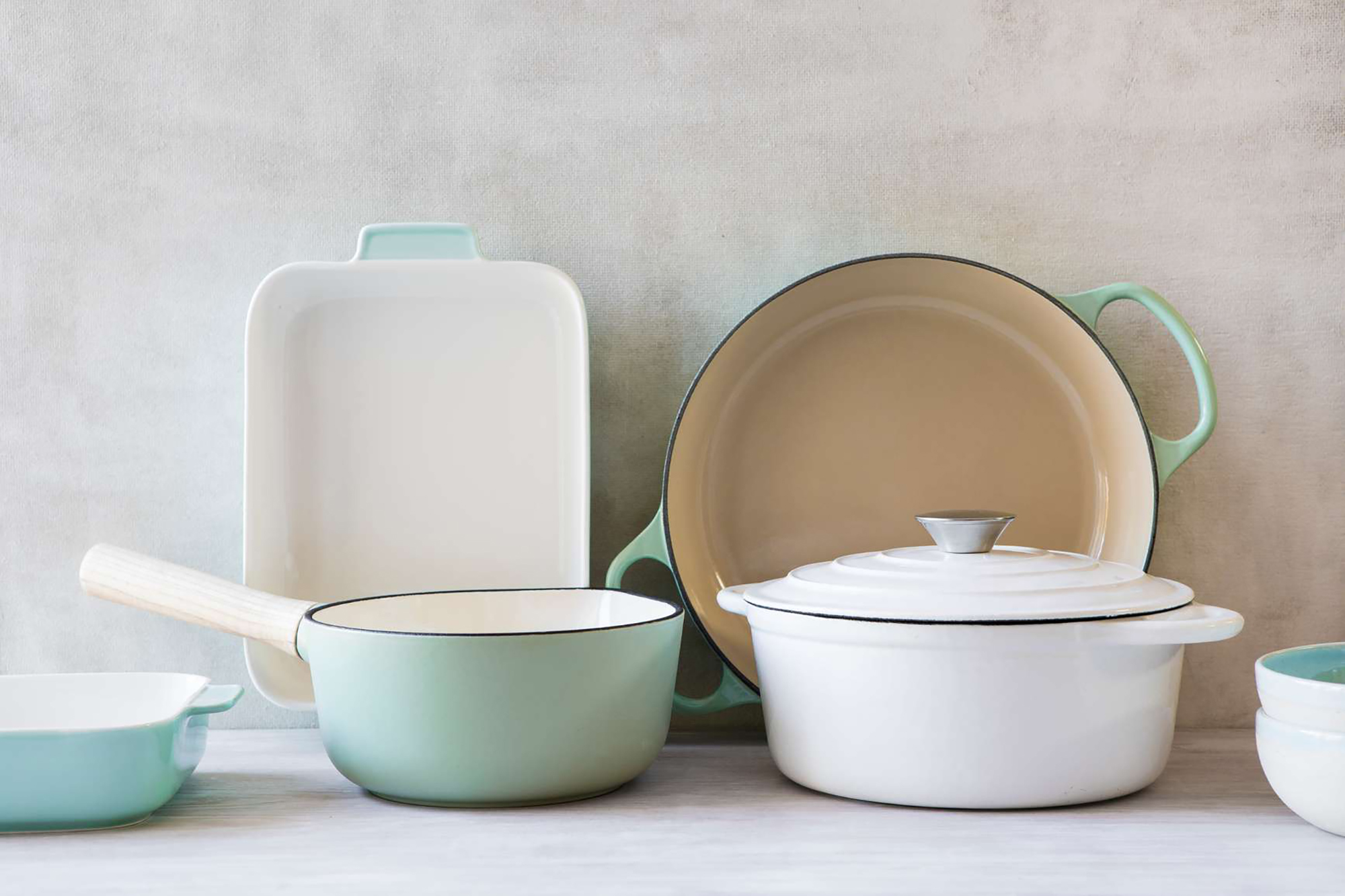
Cookware
The ceramic vs porcelain discussion also applies to cookware. Ceramic cookware is made in a similar way to tiles and dishes, in the sense that it’s fired at a lower temperature and has a more porous surface, and less density than porcelain. You can usually find two types of ceramic cookware: products made entirely from ceramic and cookware made of steel or iron with a ceramic coating. The type of metal matters, as cast iron, for example, increases the heat retention more efficiently.
Regardless of the core material, even a ceramic surface coating makes this cookware naturally non-stick and a healthier alternative to Teflon. Ceramic cookware is great for roasting and baking. While it’s perfect for ovens, most ceramic cookware is also suitable for many cooking surfaces you’d use with metal cookware. However, keep in mind that sudden changes in temperature can damage the cookware. Finally, ceramic cookware may not be suitable for dishwashers.
Porcelain cookware also features a metal core, usually carbon steel, cast iron, or aluminum. The vitrified porcelain enamel coating has a perfectly smooth, polished and glass-like surface. Porcelain pots and pans have a non-stick surface which makes cooking easier, even with smaller amounts of oil or fat. This cookware is durable and versatile as well as easy to clean. The non-reactive coating maintains the flavor of the food and even suits acidic foods.
On the other hand, porcelain cookware does have some drawbacks. It’s pricier, breakable, not suitable to use on high heat, and can have lower heat conductivity. Depending on quality, some porcelain enamels may be thinner or even made with heavy metals or harmful chemicals. When it’s well made, however, porcelain cookware has an heirloom quality. With love and care, these products can last a lifetime.
What is the difference between ceramic and porcelain?
If you’re planning a home improvement project you should understand how ceramic and porcelain differ from one another. While they are both clay-based and kiln-fired, porcelain requires higher temperatures and becomes tougher. Unglazed ceramic has water absorption properties, and even glazed ceramic tiles absorb more water than porcelain tiles, potentially limiting their use in humid areas like the bathroom.
Which is better ceramic or porcelain?
If we’re talking about durability and strength, porcelain wins in the ceramic vs porcelain fight. Whether one material is better than the other also depends on the use. Porcelain is denser and non-porous; this makes it more durable than ceramic and a better choice for shower and bathroom tiles. That doesn’t mean that you can’t install ceramic tiles in a bathroom, however. If you want a more affordable option for cooking, ceramic is a great option, especially stoneware.
Why is porcelain better than ceramic?
As mentioned above, whether porcelain is better than ceramic depends on their use. Porcelain will always be better for shower walls and bathroom flooring, while a ceramic floor – like a natural stone floor – would suit other areas of the home. In the porcelain vs. ceramic tile battle, the winner depends on the application. Types of tiles with a higher moisture absorption rate don’t really suit countertops or a backsplash, for example.
Which breaks easier porcelain or ceramic?
Since the clay mix used to make ceramic is less dense, ceramic is easier to break and crack than porcelain. The higher temperatures used to make porcelain also give it extra-hardness. When used for flooring, however, porcelain tiles are more prone to cracking compared to many stone tiles.
Is ceramic more expensive than porcelain?
Porcelain is harder, denser, and more durable than ceramic. It’s also more challenging to make, has a slightly different composition, and requires a higher temperature in the manufacturing process. As a result, porcelain is more expensive. This applies to most products, whether it’s tiles, plates, cookware, or home accessories and decorative items.
How do you tell if it’s ceramic or porcelain?
If the ceramic doesn’t have a glazed surface, telling the difference between ceramic vs porcelain is easy. That’s because ceramic has a more porous surface that absorbs more water than porcelain, which is water-resistant. The surface can also have a bumpy finish, whereas porcelain is always smooth. However, if the ceramic has a white glazing, you can tell the difference by inspecting the material and looking either for chips and cracks (ceramic) or color variations due to staining (also ceramic). This process is easier with tiles, as you can look on the sides or bottom for color differences. Porcelain has the same color all the way through, while glazed ceramic tiles have different hues on top and bottom. If all fails, you can compare the cost – porcelain will always have a higher price than ceramic.
What’s better, a ceramic or porcelain tile?
Porcelain tiles are stronger, water-resistant, stain-resistant, and generally more durable. They are also more expensive and somewhat harder to install. Ceramic tiles are durable and hard-wearing, but they absorb more water than porcelain and they may stain more easily. On the plus side, they are more affordable as well as more versatile, as they often come in a wider variety of designs.
What is the most durable tile for a shower?
Whether you’re looking for long-lasting tiles for a shower or a bathroom floor, porcelain tiles are a better choice. Porcelain tiles are dense and moisture-resistant as well as easier to clean and harder to chip than ceramic tiles. They are also suitable for areas with heavier foot traffic, such as entrance hallways.





